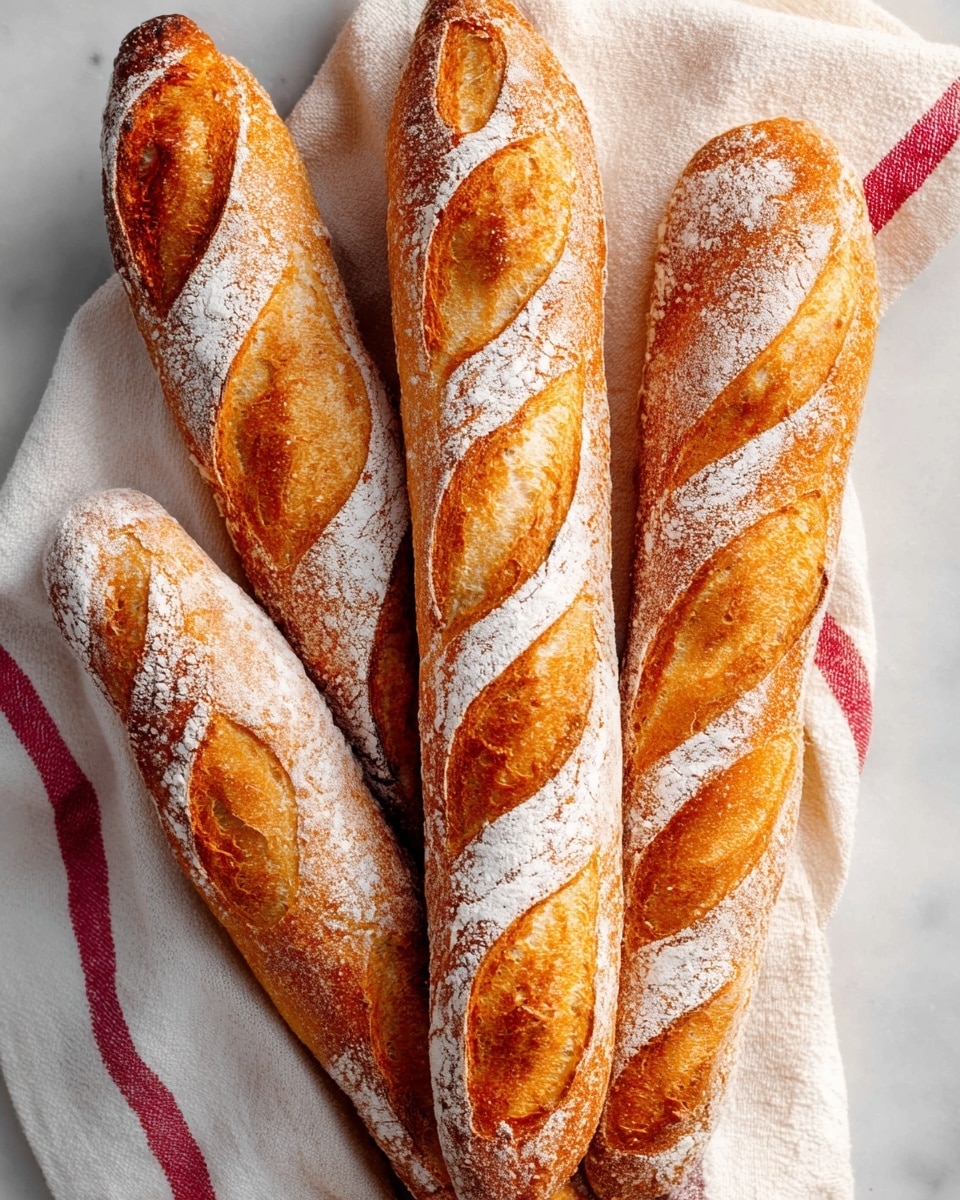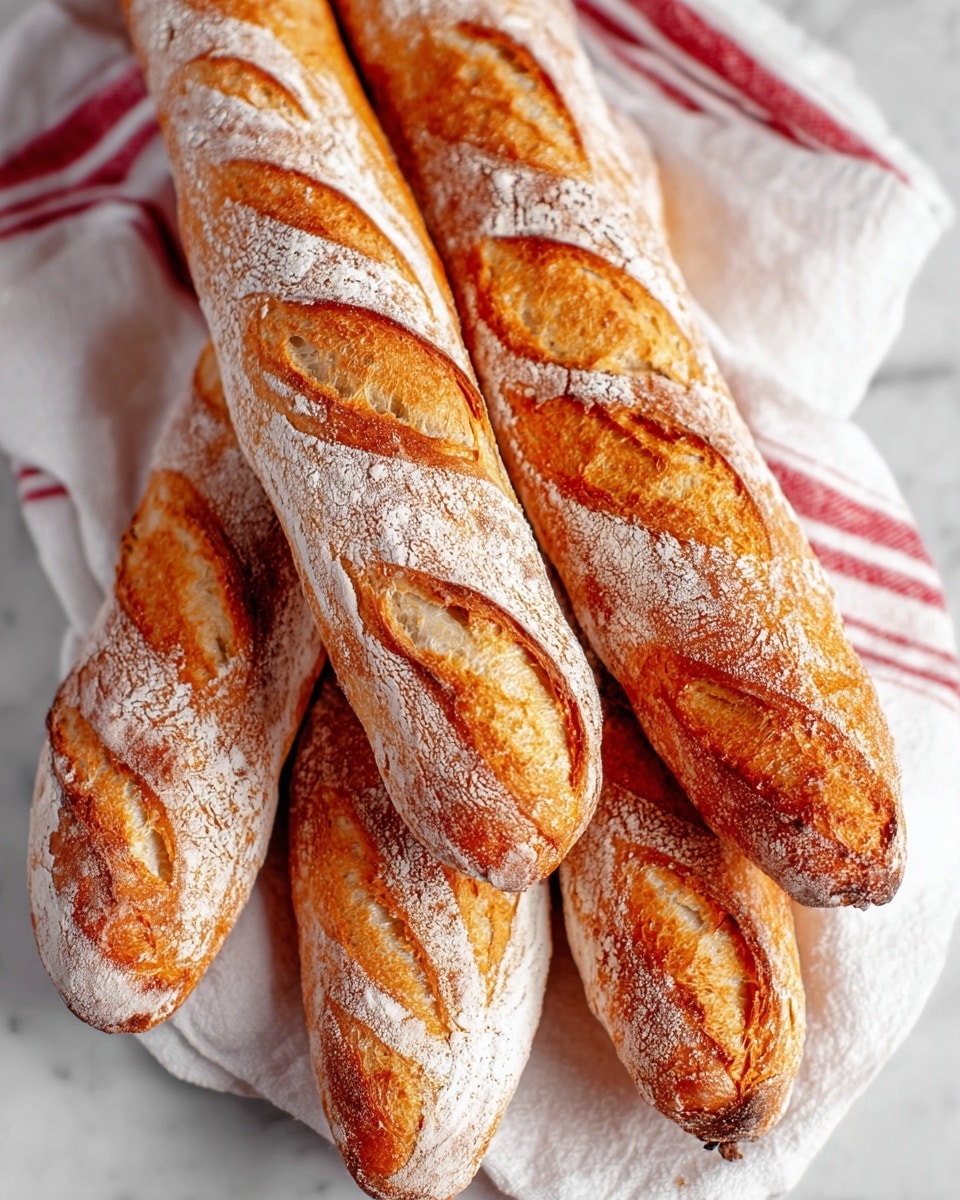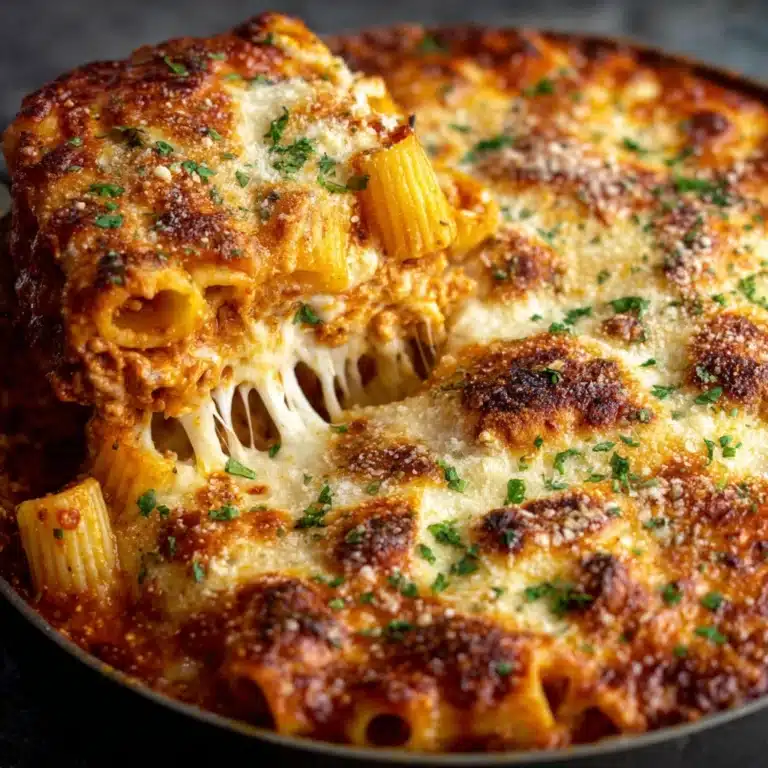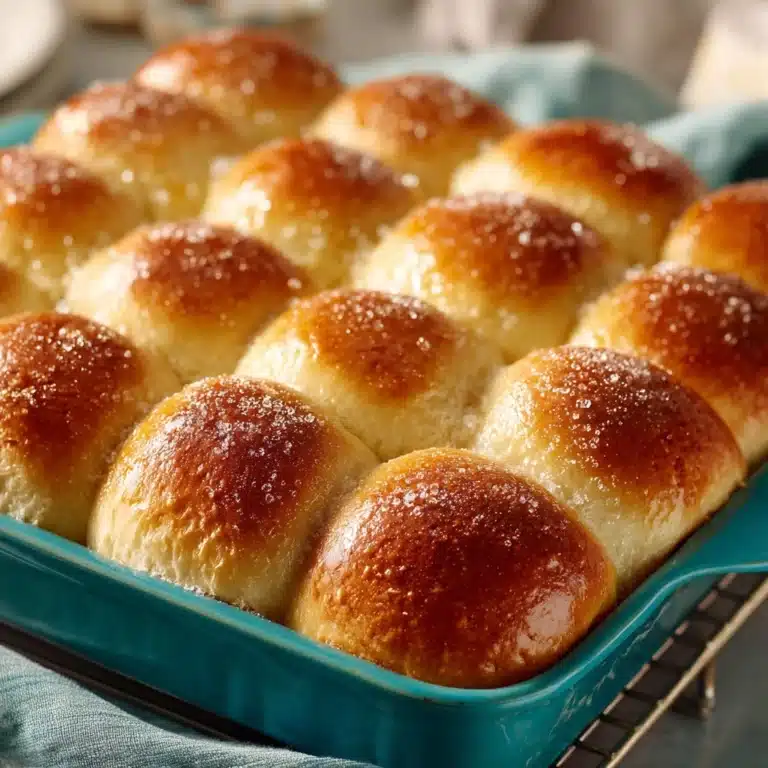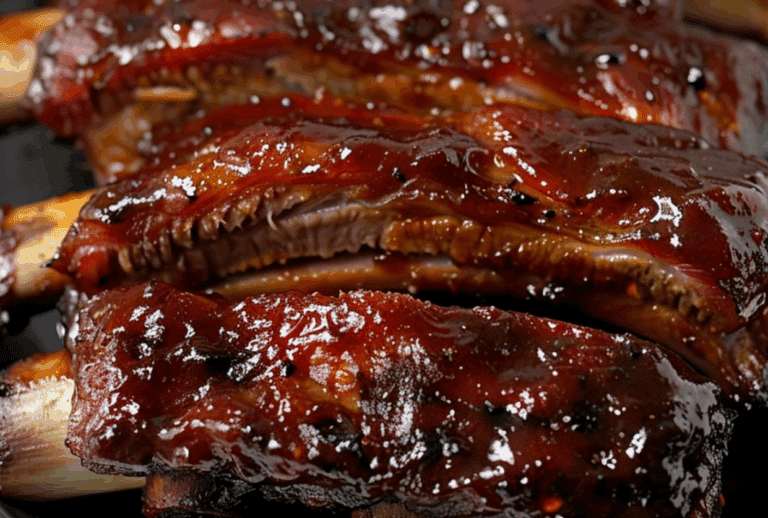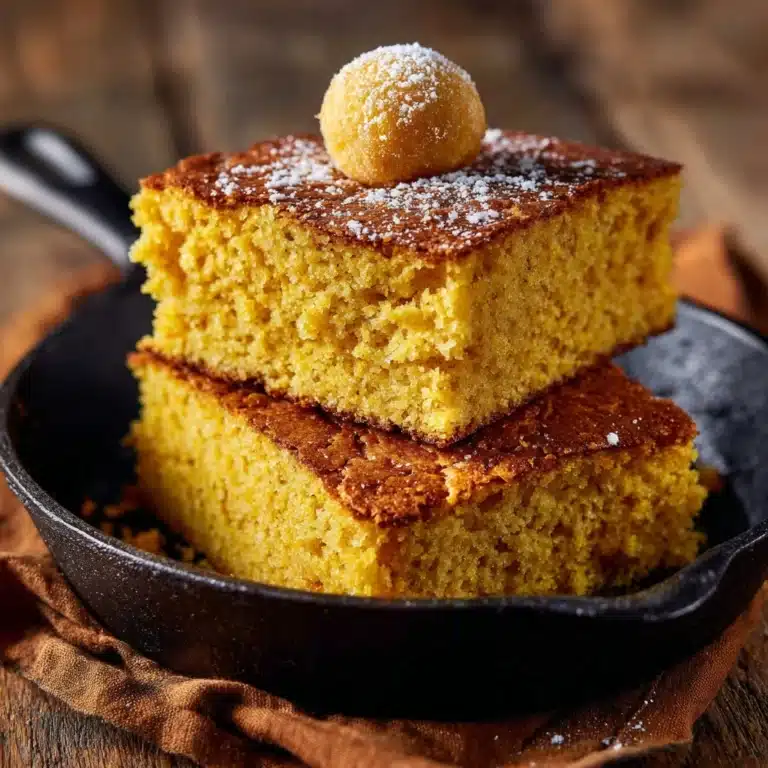There is something truly magical about biting into a freshly baked baguette with a perfectly crisp exterior and a soft, airy interior. This Classic Crusty French Baguettes Recipe captures the essence of traditional French baking with simple ingredients and techniques that anyone can master at home. Whether you’re craving bread to accompany a hearty stew or a canvas for your favorite spreads, this recipe will become your go-to for that authentic bakery-quality baguette right out of your own oven.
Ingredients You’ll Need
Getting the perfect crusty French baguette starts with a handful of straightforward yet crucial ingredients. Each one plays its own role to achieve the ideal texture, flavor, and color that defines this iconic bread.
- Bread flour (3 1/2 cups): Provides the protein strength needed to develop a chewy and elastic crumb structure.
- Salt (1 1/2 teaspoons): Enhances flavor and controls yeast activity for a balanced rise.
- Sugar (1 teaspoon): Feeds the yeast and helps to brown the crust beautifully.
- Active dry yeast (2 1/4 teaspoons / 1 packet): Powers the fermentation that gives the baguettes their lift and airy texture.
- Warm water (1 1/4 cups at 110°F): Activates the yeast while hydrating the dough for that tender crumb.
- Additional flour for dusting: Prevents sticking during kneading and shaping.
- Cornmeal for dusting the baking surface: Adds a bit of texture and stops the baguettes from adhering to the parchment.
How to Make Classic Crusty French Baguettes Recipe
Step 1: Activate the Yeast
Start by dissolving the sugar in warm water, then sprinkle the yeast over the surface. You’ll want to set this mixture aside for 5 to 10 minutes until it gets foamy and bubbly, signaling the yeast is alive and kicking.
Step 2: Mix and Form the Dough
Once your yeast mixture is ready, add in the bread flour and salt. Stir everything together until the dough just begins to form a rough ball. This part feels a little sticky, but don’t worry—it will come together nicely as you move forward.
Step 3: Knead the Dough
Transfer your dough to a floured surface and knead it passionately for 8 to 10 minutes. You’re aiming for smooth, elastic dough that stretches with a bit of resistance—this is what builds the baguette’s beautiful texture.
Step 4: First Rise
Place your kneaded dough in a lightly greased bowl, cover it with a clean cloth, and set it in a warm spot. Let it rise for 1 to 1 1/2 hours or until it doubles in size. This gentle fermentation develops the complex flavors you’ll love.
Step 5: Shape the Baguettes
After the rise, punch down the dough to release trapped air, then divide it into two equal pieces. Roll each piece into a rectangle and then tightly shape it into that classic long baguette form, sealing the seams as you go.
Step 6: Second Rise
Place the shaped baguettes on a parchment-lined baking sheet dusted with cornmeal to prevent sticking. Cover loosely and let them rest for another 30 to 45 minutes. This final rise helps achieve that airy crumb inside the crust.
Step 7: Bake with Steam
Preheat your oven to 450°F and place a metal baking dish on the bottom rack. Just before baking, score slashes across the top of each baguette using a sharp knife or lame—this not only looks stunning but controls how the bread expands. Pour one cup of hot water into the metal dish to create steam and immediately bake the baguettes for 20 to 25 minutes until they turn golden brown and crusty.
Step 8: Cool Down
Allow your baguettes to cool completely on a wire rack. This step is key because it lets the interior set properly and keeps the crust irresistibly crisp when you slice into it.
How to Serve Classic Crusty French Baguettes Recipe

Garnishes
While the baguette itself is glorious on its own, a light brush of melted butter or a sprinkle of flaky sea salt can elevate your serving experience. You can also add fresh herbs like rosemary or thyme for a fragrant touch that complements the simple bread flavors.
Side Dishes
A crusty baguette pairs beautifully with an array of dishes. Think creamy cheeses, rustic pates, vibrant salads, or hearty soups. Its sturdy crunch and chewy center make it perfect for dipping, spreading, or just enjoying plain alongside a meal.
Creative Ways to Present
To wow your guests, slice your Classic Crusty French Baguettes Recipe diagonally for elegant bite-sized pieces, serve it alongside charcuterie boards, or hollow out the center to turn it into a bread bowl filled with savory stews or dips. The possibilities are endless, and this bread is your perfect canvas!
Make Ahead and Storage
Storing Leftovers
If you find yourself with extra baguette, storing it in a paper bag at room temperature helps maintain its crust for a day or two. Avoid plastic bags which can trap moisture and soften that coveted crust.
Freezing
Freeze your baguettes whole or sliced in airtight freezer bags for up to three months. Wrap tightly in foil before placing in the bag to prevent freezer burn and preserve freshness.
Reheating
To bring back the crisp crust and warm crumb, sprinkle a few drops of water on the baguette and reheat it in a preheated oven at 350°F for 5 to 10 minutes. This quick steam refresh revives the bread’s texture beautifully.
FAQs
Can I use all-purpose flour instead of bread flour?
While all-purpose flour can work in a pinch, bread flour’s higher protein content provides better gluten development, resulting in a chewier texture and the ideal crumb for baguettes.
Why is steam important when baking baguettes?
Steam keeps the baking surface moist during the initial oven spring, allowing the crust to expand fully before hardening and resulting in that signature crisp, shiny exterior.
How do I know when the dough has risen enough?
The dough should roughly double in size and feel soft and slightly springy to the touch. If you gently press a finger in, the indentation should slowly fill back in.
Can I make this recipe gluten-free?
This Classic Crusty French Baguettes Recipe relies on gluten’s structure to develop the perfect texture. Gluten-free bread requires a different approach and ingredients to replicate the same results.
Is it necessary to score the baguettes before baking?
Scoring allows steam to escape in a controlled way, guiding the bread’s expansion and creating the traditional appearance and texture of baguettes.
Final Thoughts
This Classic Crusty French Baguettes Recipe is a delightful journey from basic ingredients to bakery-quality bread right in your kitchen. Once you master these steps, the pleasure of fresh, crusty baguettes will be right at your fingertips whenever you want. So, grab your apron and give it a try—your taste buds will thank you for every golden-brown bite!
Print
Classic Crusty French Baguettes Recipe
- Prep Time: 20 minutes
- Cook Time: 25 minutes
- Total Time: 2 hours 30 minutes
- Yield: 2 baguettes
- Category: Bread
- Method: Baking
- Cuisine: French
- Diet: Vegan
Description
This Classic Crusty French Baguettes recipe guides you to make authentic, golden brown, and crusty baguettes at home. With a beautifully chewy interior and a crisp crust, these traditional French loaves are perfect for sandwiches, soups, or simply enjoyed with butter. The recipe includes tips for achieving the perfect steam during baking to create that iconic crust and suggests an optional overnight fermentation to enhance flavor and texture.
Ingredients
For the Dough
- 3 1/2 cups bread flour
- 1 1/2 teaspoons salt
- 1 teaspoon sugar
- 2 1/4 teaspoons active dry yeast (1 packet)
- 1 1/4 cups warm water (110°F)
For Baking
- Additional flour for dusting
- Cornmeal for dusting baking surface
- 1 cup hot water (for creating steam in the oven)
Instructions
- Activate the yeast: In a large mixing bowl, combine the warm water and sugar. Sprinkle the yeast evenly over the surface and let it sit for 5 to 10 minutes until foamy, indicating the yeast is active.
- Make the dough: Add the bread flour and salt to the yeast mixture. Stir until a rough dough forms, then transfer it to a floured surface for kneading.
- Knead the dough: Knead the dough for 8 to 10 minutes until it becomes smooth and elastic, which helps develop gluten for structure and chewiness.
- First rise: Place the dough in a lightly greased bowl, cover it with a clean towel or plastic wrap, and let it rise in a warm spot for 1 to 1 1/2 hours, or until it has doubled in size.
- Shape the baguettes: Punch down the dough to release air. Divide it into two equal portions. Roll each section into a rectangle, then tightly roll it lengthwise into a baguette shape, pinching the seams to seal.
- Second rise: Place the shaped baguettes on a parchment-lined baking sheet dusted generously with cornmeal. Cover loosely and let rise for another 30 to 45 minutes until slightly puffed.
- Preheat oven and prepare for steam: Preheat your oven to 450°F (232°C). Place a metal baking dish on the bottom rack to preheat as well, which will be used for creating steam.
- Score the baguettes: Just before baking, use a sharp knife or lame to make diagonal slashes on the tops of the baguettes. This allows the bread to expand evenly while baking.
- Bake with steam: Pour 1 cup of hot water into the preheated metal baking dish on the bottom of the oven to create steam. Quickly place the baguettes on the middle rack and close the oven door to trap the steam.
- Baking time: Bake for 20 to 25 minutes, or until the baguettes are golden brown and crusty.
- Cool: Remove the baguettes and let them cool completely on a wire rack before slicing, to allow the interior to set properly.
Notes
- For an extra crunchy crust, mist the baguettes with water during the first 5 minutes of baking using a spray bottle.
- Resting the shaped dough in the refrigerator overnight allows the flavors to develop more deeply and improves texture.
- If you store leftover baguettes, reheat them in the oven to refresh the crust before serving.

